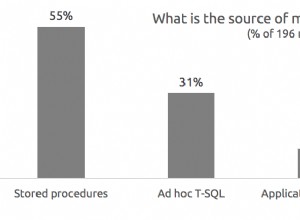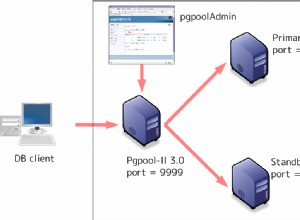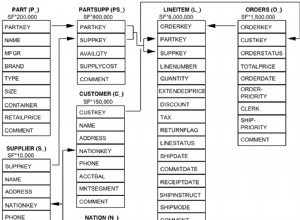Com esses dados de teste
INSERT INTO foos VALUES (1234, SYSDATE);
INSERT INTO foos VALUES (1235, SYSDATE);
INSERT INTO foos VALUES (1236, SYSDATE);
Conforme descrito aqui https://jonathanlewis.wordpress.com/2009/11 /21/ora_hash-function/
você consegue
with hsh as (
select BATCH_ID, ora_hash(BATCH_ID, 3)+1 subpartition_position from foos)
select BATCH_ID, SUBPARTITION_POSITION,
(select subpartition_name from user_tab_subpartitions where table_name = 'FOOS' and SUBPARTITION_POSITION = hsh.SUBPARTITION_POSITION) subpartition_name
from hsh;
BATCH_ID SUBPARTITION_POSITION SUBPARTITION_NAME
---------- --------------------- ------------------------------
1236 1 R0_H0
1235 3 R0_H2
1234 4 R0_H3
Observe que o parâmetro 3 em
ora_hash é o número de (sub)partições subtraído por 1. (=4-1). Você terá que fazer processamento adicional se o número de partição não for uma potência de dois (o que não é recomendado) conforme descrito na referência. Você pode verificar o resultado com uma consulta de partição explícita como abaixo
select * from foos subpartition( R0_H0 ); -- 1236
select * from foos subpartition( R0_H1 ); -- empty
select * from foos subpartition( R0_H2 ); -- 1235
select * from foos subpartition( R0_H3 ); -- 1234
E é claro que também funciona para novas chaves, novas para 1237 que não está na tabela.
with hsh as (
select 1237 BATCH_ID, ora_hash(1237, 3)+1 subpartition_position from dual)
select BATCH_ID, SUBPARTITION_POSITION,
(select subpartition_name from user_tab_subpartitions where table_name = 'FOOS' and SUBPARTITION_POSITION = hsh.SUBPARTITION_POSITION) subpartition_name
from hsh;
BATCH_ID SUBPARTITION_POSITION SUBPARTITION_NAME
---------- --------------------- ------------------------------
1237 2 R0_H1
A subpartição "prevista" é
R0_H1 , vamos ver onde o INSERT irá:INSERT INTO foos VALUES (1237, SYSDATE);
select * from foos subpartition( R0_H1 ); -- 1237
Mas use com cuidado, pois é um recurso não documentado pela IMO...




